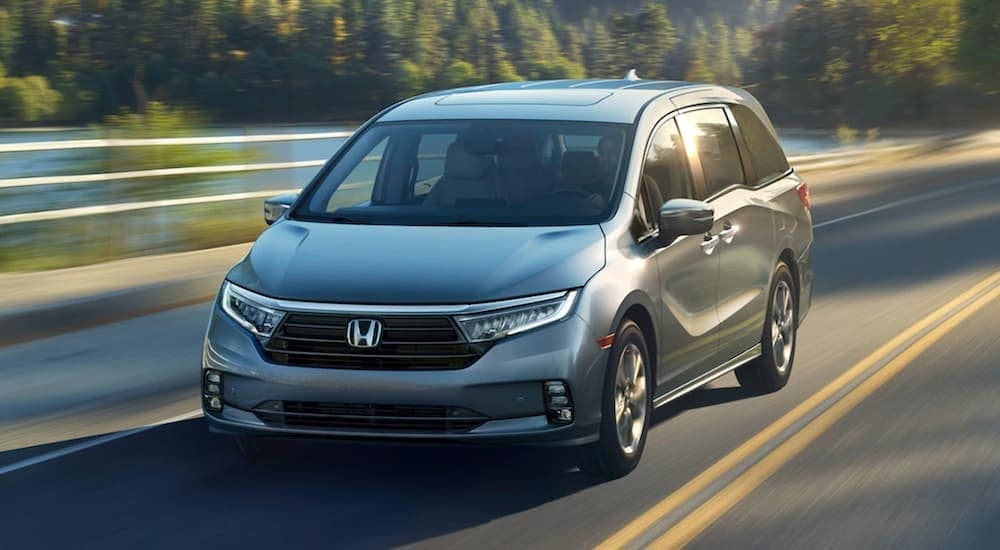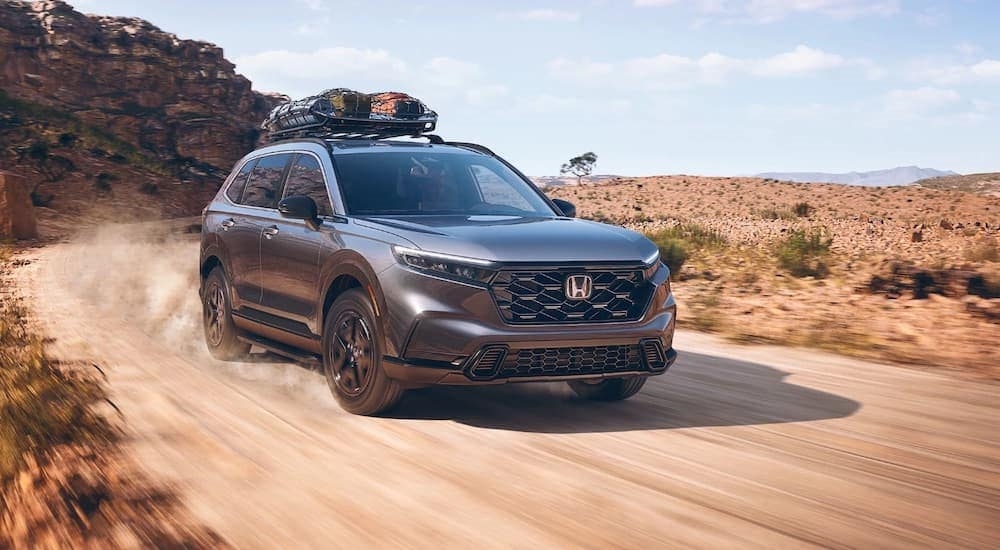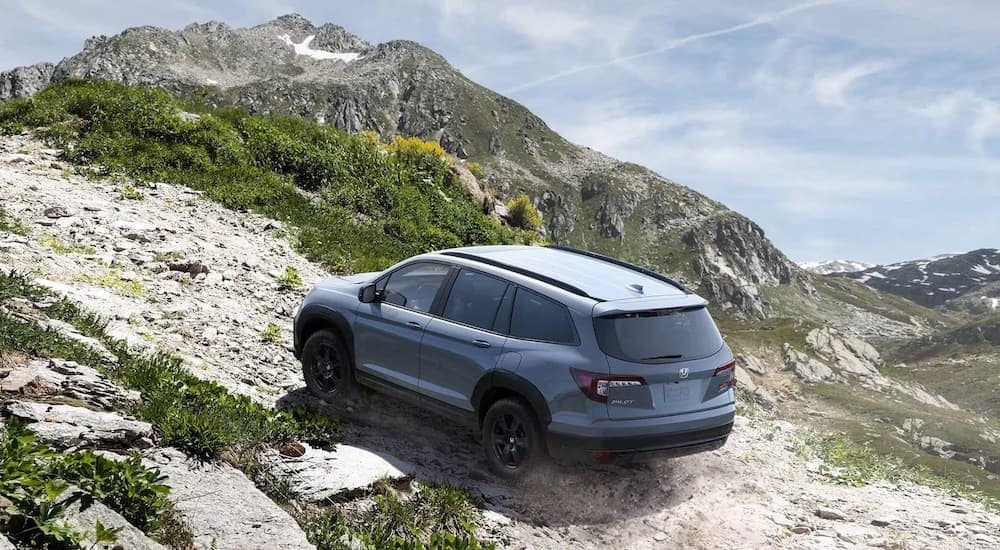Families are more diverse than ever these days, so finding the perfect vehicle for your family might feel like a challenge, but it doesn’t have to. We are proud to be your used Honda dealer and will help you find the right vehicle at the right price. Honda’s lineup includes models that range from compact sedans to large minivans and everything in between. This is great news if your family is still growing or you need the added flexibility of additional cargo space. Whether you need a big or small vehicle, there’s a Honda waiting for you.
Honda is chosen by families for many reasons. Its models are not only stylish but have a modern practicality that makes them appealing to buyers. Drivers can expect a lot for their money when they set their sights on a pre-owned Honda model. Hondas include understated but great-looking exteriors. As for the interiors, they include a thoughtful design that makes staying organized and comfortable simple for busy families on the go. Check out some of the best models for your lifestyle and get set to hit the road with your family sooner rather than later.
The Honda CR-V for First Time Parents
Starting your family is exciting but can also leave your stomach in knots. It’s only natural to not only want a convenient vehicle but also one that is safe and makes getting the baby in and out of the back seat as easy as possible. Don’t worry, there’s a Honda for that.
The Honda CR-V checks all the right boxes, including safety, affordability, and comfort. The interior design gives you plenty of cargo space to keep essentials organized and on hand, plus bring along all the gear you need for a busy day out, including bags, a stroller, and any extras you pick up along the way.
We love the CR-V for new families because it keeps things flexible but also affordable. There is a pre-owned CR-V available for any budget, plus the model boasts solid fuel efficiency, so you get where you’re going for less. The small SUV’s reliability means few hidden surprises, and you’re guaranteed miles of trouble-free driving. Plenty of power helps you tackle winter roads or slippery conditions with confidence.
The four-door, five-seater CR-V allows parents to easily access the back row to adjust car seats and secure their precious cargo without having to strain and stress. The CR-V also has a steady track record when it comes to safety. The Honda Sensing suite is a package of the latest driver-assist technology that comes standard on newer models, giving you peace of mind at no extra cost.
The Honda Odyssey for Big Families
The Honda Odyssey is one of the few classic minivans still on the market. Pre-owned models are affordable and deliver in a big way when it comes to accommodating your family. With three rows of seats, the Odyssey has no problem seating up to eight passengers! Whether you’ve got a large family, in-laws in town, or a few extra guests, the Odyssey has no trouble finding space for everyone.
The airy cabin and wide sliding doors make it easy to access the second and third rows. Passengers of all ages can easily climb in and stretch out with ample head and leg room. Unbeatable cargo space leaves room for luggage, sports gear, project materials, and even the family dog. With the Odyssey, nothing gets left behind.
When shopping for a pre-owned Odyssey, keep an eye out for the Magic Slide second-row seats. This amazing feature lets you essentially rearrange the seats, and if you don’t need them, no problem––the middle seat can be removed to create additional space! Is your family getting ready for a big move? Having additional cargo room for hauling boxes can be a time saver and make moving your family to a new home easy and headache-free.
Besides comfort and practicality, the Odyssey keeps things fun for everyone, even on long trips, thanks to features like adjustable entertainment screens and wireless headphones. Reclining chairs are great for tired passengers looking for a nap. The variety of LATCH anchors across the two back rows keeps seating flexible for small children in car seats.
The handling of the Odyssey is smooth and makes it a joy for Mom or Dad to drive, whether through town or on the highway. The Cabin Watch system helps keep an eye on the second and third rows, while Cabin Talk means you don’t have to shout to be easily heard in the back. The Odyssey was designed with families in mind. If you’re looking for the ultimate family vehicle that can grow and change with your lifestyle needs, it’s tough to beat the friendly and flexible Honda Odyssey.
The Honda Pilot for Active Families
The Honda Pilot is a three-row SUV with big potential. If you find that minivans aren’t really your thing and you want an SUV that can handle your family’s active lifestyle, the Honda Pilot might be the perfect vehicle for your needs. This midsize SUV has the potential to seat up to eight passengers, depending on your seating choices. The expansive cabin means plenty of potential. Whether you need extra seats or extra space, the Pilot makes bringing along camping gear, sports equipment, plus an extra friend or two effortless.
The Pilot offers exceptional performance thanks to its robust V6 engine, which makes it great for weekends in the woods or tackling highway traffic. There’s no overlooking that the Pilot is the largest and most powerful SUV in the Honda lineup. The tough, sporty styling on the outside and durable cabin materials on the inside make it the ultimate adventure machine for families who are looking to get lost in nature for a week. When shopping for a pre-owned Pilot, it’s possible to scoop up a real powerhouse without straining your budget.
The advanced tech of the Pilot helps keep everyone connected, even passengers in the second and third rows who can stream music or play with tablets during long car rides. The Pilot was designed to take care of everyone. Expect comfort and the strength of Honda to give you the peace of mind you’re after mile after mile.
A Honda for Your Family
We’ve just scratched the surface of Honda’s great family-friendly choices. From the compact CR-V, perfect for new or small families, to the spacious Odyssey and midsize Pilot, there is a Honda that is more than capable of fitting into your family’s unique or busy lifestyle.
When searching for the best vehicle for your family, asking yourself questions about your daily driving habits, family needs, and lifestyle can help you narrow down your list so that you get a vehicle that fits your life for years to come. If you’re planning on growing your family, having a vehicle with plenty of seating and cargo room is essential. No matter what you need, Honda has solutions that give families years and years of great memories, steady performance, and flexibility.
Whether you’re a growing family or your family is just getting started, Honda offers a wide range of economical and flexible options to meet your budget and give you a vehicle that makes your day run a little smoother. Easy access to back rows, extra cargo space, smooth performance, and reliability all help make a Honda the perfect addition to any family.



